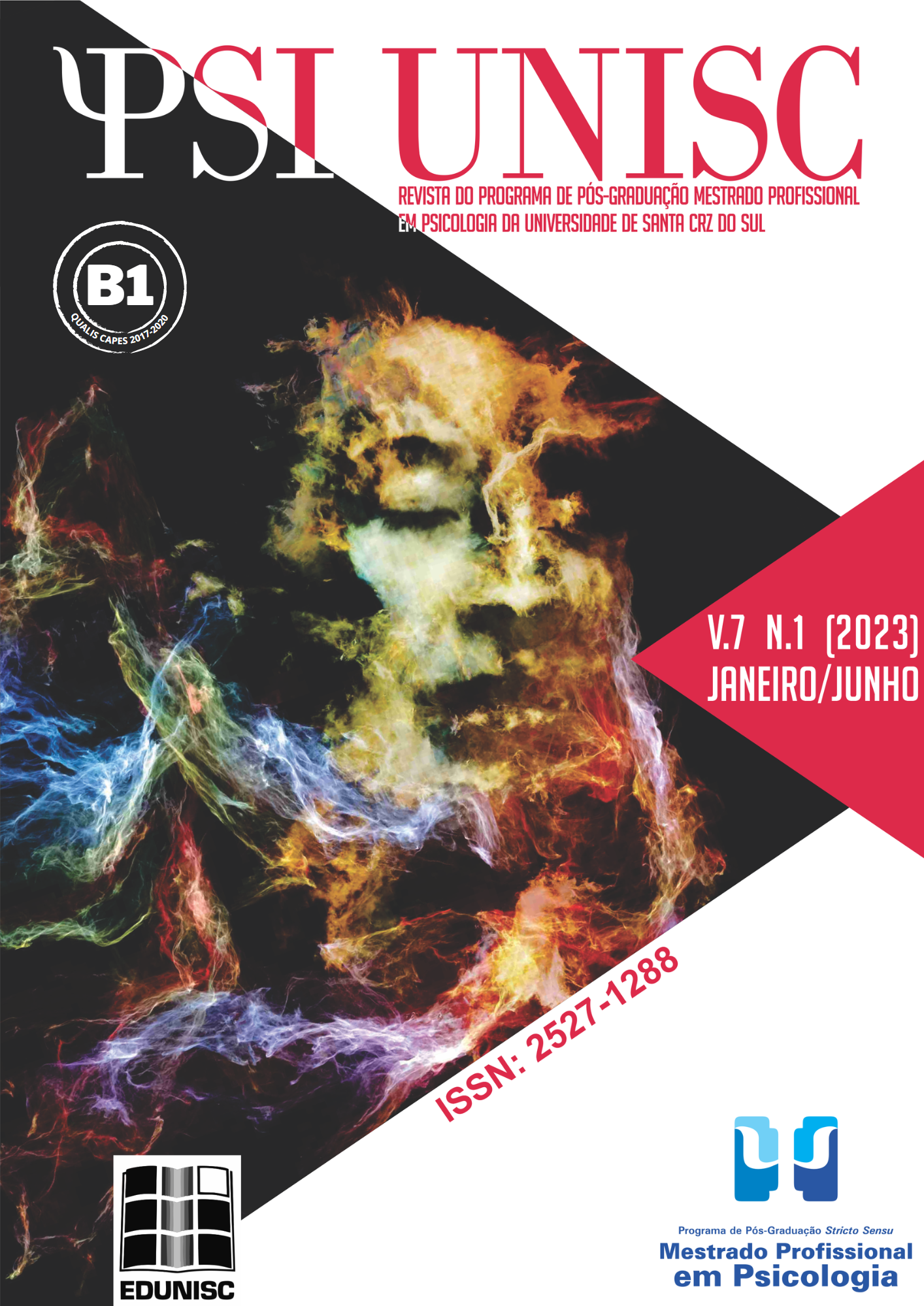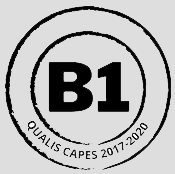Cinderella: Implications of the maternal function in the Ego maturation processes
DOI:
https://doi.org/10.17058/psiunisc.v7i1.17546Keywords:
Fairy tales, Cinderella, Maternal function, Maturation of the Ego, WinnicottAbstract
The good enough mother refers to that figure capable of interpreting and adapting to the baby's needs, supporting him physiologically and affectively, which provides an opportunity to establish a favorable environment for the Ego maturation processes. Fairy tales are universal narratives that contribute to the elaboration of internal conflicts, in order to connect the stories to their own experience. In this context, the objective of this study is to identify the possible implications of the maternal function in the processes of Ego maturation, based on the fairy tale Cinderella. This research is qualitative, with an exploratory and explanatory character, whose technique for analyzing the findings is content analysis. The results show that the role of the mother figure is crucial for the subject to be able to tolerate frustration; to reach the symbolic world; to acquire independence, Ego integration and development of the true self. In line, the findings show that fairy tales are configured as a possible resource for the projection of the child, as well as of their mother figure, which provides opportunities for the elaboration of conflicts. Through this work, the contributions of the use of fairy tale and its influence on children's emotional development are identified. In this sense, the use of this work can benefit in social sphere, the scientific areas, in particular, psychology and education.
Downloads
References
Aching, M. C. & Granato, T. M. M. (2016). The good enough mother under social vulnerability conditions. Estudos de Psicologia (Campinas), 33(1), 15-24. doi: 10.1590/1982-02752016000100003
Bettelheim, B. (2018). A Psicanálise dos Contos de Fadas (36a. ed.; A. Caetano, Trad.). São Paulo, SP: Paz e Terra. (Original publicado em 1976).
Campana, N. T. C., dos Santos, C. V. M., & Gomes, I. C. (2019). Who is concerned with primary preoccupation?: Winnicott's theory and parental care in contemporary times. Psicologia Clínica, 31(1), 32-53. doi: 10.33208/PC1980-5438v0031n01A02
Cann-Milland, S., & Southcott, J. (2018). The very perplexed stepmother: Step motherhood and developing a healthy self-identity. The Qualitative Report, 23(4), 823-838. Recuperado de https://nsuworks.nova.edu/cgi/viewcontent.cgi?article=3206&context=tqr/
Coelho, R. S. (2013). A experiência do nascimento na obra de D.W. Winnicott (1a. ed.). São Paulo, SP: Casa do Psicólogo.
Corso, D. L., & Corso, M. (2006). Fadas no divã: psicanálise nas histórias infantis. Rio de Janeiro, RJ: Artmed.
Dahl, G. (2016). Revisiting the crisis in Freud's libido theory and Abraham's concept of the oral‐sadistic phase as a way out of it. The International Journal of Psychoanalysis, 97(5), 1263-1278. doi: 10.1111/1745-8315.12517
Fabozzi, P. (2018). Winnicott's Subjective Object: Merging experiences as preconditions of being. The Psychoanalytic Quarterly, 87(1), 73-99. doi: 10.1080/00332828.2018.1424437
Flick, U. (2009). Introdução à pesquisa qualitativa. Porto Alegre, RS: Artmed
Freud, S. (1972). Fragmento da análise de um caso de histeria. Três ensaios sobre a teoria da sexualidade e outros trabalhos (J. Salomão, Trad.). Rio de Janeiro: Imago. (Trabalho original publicado em 1905)
Gil, A. C. (2010). Como elaborar projetos de pesquisa (5a. ed.). São Paulo, SP: Atlas.
Gildersleeve, J. & Batorowicz, B. (2018). ‘He is telling us fairy tales’: parental anxiety and wartime childhood in Life is Beautiful, The Boy in the Striped Pajamas and Fairy Tales from Auschwitz. Holocaust Studies, 24(1), 26-44. doi: 10.1080/17504902.2017.1340074
Hueck, K. (2017). O lado sombrio dos contos de fadas. Superinteressante. São Paulo, SP: abril.
Iglesias, A. & Iglesias, A. (2016). Hypnotic mediated therapeutic storytelling with over-involved children. Contemporary Hypnosis & Integrative Therapy, 31(1) 6-12. Recuperado de http://iglesiasphd.com/wp-content/uploads/sites/97/2013/07/Contemporary-Hypnosis-Integrated-Therapies.pdf
Laville, C. & Dionne, J. (1999). A construção do saber: manual de metodologia da pesquisa em ciências humanas (H. Monteiro & F. Settineri, Trads.). Porto Alegre, RS: Artmed.
Lima, T. C. & Mioto, R. C. T. (2007). Procedimentos metodológicos na construção do conhecimento científico: a pesquisa bibliográfica. Revista Katálysis, 10(1), 37-45. doi:10.1590/S1414-49802007000300004
Machado, A. M. (2010). Contos de fadas. Rio de Janeiro, RJ: Zahar.
McKay, R. K. (2019). Where Objects Were, Subjects Now May Be: The Work of Jessica Benjamin and Reimagining Maternal Subjectivity in Transitional Space. Psychoanalytic Inquiry, 39(2), 163-173. doi: 10.1080/07351690.2018.1561115
McKinnell, L. (2019). The Ethics of Enchantment: The Role of Folk Tales and Fairy Tales in the Ethical Imagination. Philosophy and Literature, 43(1), 192-209. doi: 10.1353/phl.2019.0011
Michael, O. (2017). Excavating Childhood: Fairy Tales, Monsters, and Abuse Survival in Lynda Barry's What It Is. a/b: Auto/Biography Studies, 32(3), 541-566. Recuperado de https://www.tandfonline.com/doi/pdf/10.1080/08989575.2017.1338002?casa_token=dtr8AaUewCIAAAAA:_wdno6roMg7FGG3VaC3OHzhahANRPc_qAGJKw24r5q9ITlu2OfdQJt1M2HRqrF8jNN3q_fe8b0if5Q
Nasio, J. D. (1995). Introdução às obras de Freud, Ferenczi, Groddeck, Klein, Winnicott, Dolto, Lacan (1a ed.; Ribeiro, V., Trad.). Rio de Janeiro, RJ: Zahar.
Perrault, C. (2010). Cinderela ou O Sapatinho de Vidro. In A. M. Machado, Contos de fadas de Perrault, Grimm, Andersen e outros (M. L. X. A. Borges, Trad.; pp. 19-31). Rio de Janeiro, RJ: Zahar. (Original publicado em 1697).
Prodanov, C. C. & Freitas, E. C. (2013). Metodologia do Trabalho Científico: métodos e técnicas da pesquisa e do trabalho acadêmico. Novo Hamburgo, RS: Editora Feevale.
Quadros, E. A. (2018). Crianças e adolescentes: Pichon-Rivière e Winnicott. In E. A. Quadros, Fundamentos psicanalíticos (pp.90-129). Curitiba, PR: InterSaberes.
Radino, G. (2004). Contos de fadas e realidade psíquica: a importância da fantasia no desenvolvimento. São Paulo, SP: Casa do psicólogo.
Raufman, R. & Weinberg, H. (2016). Early Mother–Son Relationships, Primary levels of Mental Organization and the Foundation Matrix as Expressed in Fairy Tales: The Case of the ‘Jewish Mother’. Group Analysis, 49(2), 149-163. doi: 10.1177/0533316416633651
Reis, S. D. C. (2014). O personagem central nos contos de fadas (Dissertação de Mestrado). Programa de Pós-Graduação em Letras. Centro de Artes e Comunicação. Universidade Federal de Pernambuco. Recife, Pernambuco.
Santos, M. A. D. (1999). A constituição do mundo psíquico na concepção winnicottiana: uma contribuição à clínica das psicoses. Psicologia: Reflexão e Crítica, 12(3). doi: 10.1590/S0102-79721999000300005
Seligman, S. (2018). Illusion as a basic psychic principle: Winnicott, Freud, Oedipus, and Trump. Journal of the American Psychoanalytic Association, 66(2), 263-288. doi: 10.1177/0003065118769908
Steinberg, B. (2019). Civitarese on O: Bion’s Pragmatic and “Aesthetic-Intersubjective” Theory of Truth, the Growth of the Mind, and Therapeutic Action: Discussion of “Bion’s O and His Pseudo-Mystical Path”. Psychoanalytic Dialogues, 29(4), 418-426. doi: 10.1080/10481885.2019.1632659
Våpenstad, E. V. (2017). Attack and defence: From “attacks on linking” to “positive capability” in a child psychoanalysis. Psychoanalytic psychology, 34(3), 290-299. doi: 10.1037/pap0000061
Winnicott, D. W. (1975). O brincar e a realidade (1a. ed.; J. O. A. Abreu & V. Nobre, Trad.). Rio de Janeiro, RJ: Imago. (Original publicado em 1971).
Winnicott, D. W. (1990). O ambiente e os processos de maturação: estudos sobre a teoria do desenvolvimento emocional. (3a. ed., I. C. S. Ortiz, Trad.). Porto Alegre, RS: Artes Médicas. (Original publicado em 1983).
Winnicott, D. W. (1993). Obras escolhidas: da pediatria à psicanálise. (J. Russo, Trad.). Rio de Janeiro, RJ: Francisco Alves. (Original publicado em 1949).
Winnicott, C. (1994). Explorações Psicanalíticas. (A. Cabral, Trad.). Porto Alegre, RS: Artes Médicas. (Original publicado em 1989).
Winnicott, D. W. (1997). Pensando sobre crianças. (1a. ed.; M. A. V. Veronese, Trad). Porto Alegre, RS: Artmed. (Original publicado em 1996).
Winnicott, D. W. (1999). Os bebês e suas mães. (J. L. Camargo, Trad). São Paulo, SP: Martins Fontes. (Original publicado em 1987).
Winnicott, D. W. (2005). Privação e delinquência (4a. ed., A. Cabral, Trad.). São Paulo, SP: Martins Fortes. (Original publicado em 1984).
Winnicott, D. W. (2019). A criança e o seu mundo (6a. ed.; A. Cabral, Trad.). Rio de Janeiro, RJ: LTC. (Original publicado em 1957).
Zanella, L. C. H. (2013). Metodologia de pesquisa (2a. ed.). Departamento de Ciências da Administração. Universidade Federal de Santa Catarina, Florianópolis. Recuperado de http://arquivos.eadadm.ufsc.br/EaDADM/UAB_2014_2/Modulo_1/Metodologia/material_didatico/Livro%20texto%20Metodologia%20da%20Pesquisa.pdf
Zimerman, D. E. (2010). Os quatro vínculos: amor, ódio, conhecimento e reconhecimento na psicanálise e em nossas vidas. São Paulo, SP: Artmed.
Downloads
Published
How to Cite
Issue
Section
License
The submission of originals to this journal implies the transfer, by the authors, of the printed and digital publication rights. The copyrights for the published articles are those of the author, with periodical rights on the first publication. Authors may only use the same results in other publications clearly indicating this journal as the medium of the original publication. Because we are an open access journal, we allow free use of articles in educational and scientific applications provided the source is cited under the Creative Commons CC-BY license.




